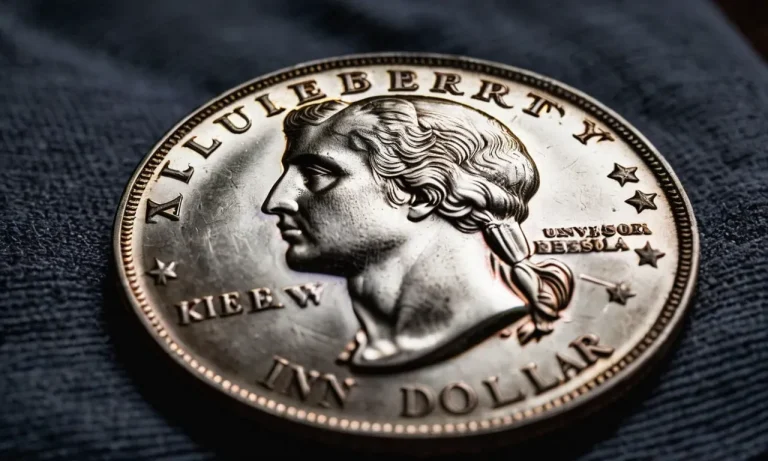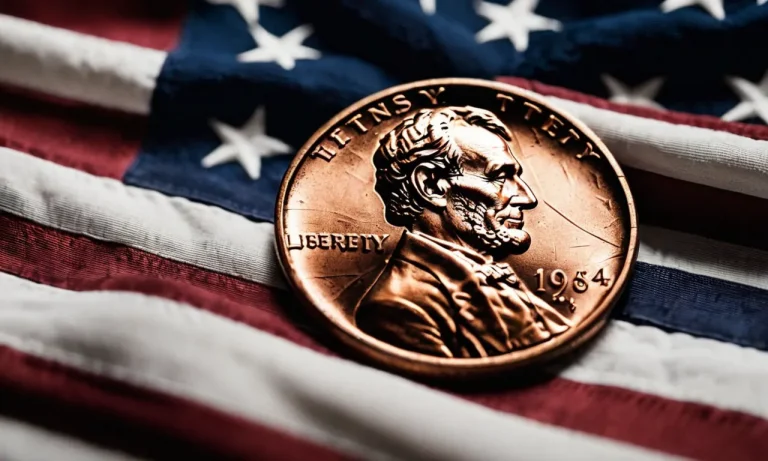What president is on the 1000-dollar bill? For those wondering what past president’s face graces the rare $1000 bill, read on. We’ll give a quick answer before diving into the history of the $1000 bill and the president it features.
If you’re short on time, here’s the quick answer: There are no $1000 bills currently in circulation. The last $1000 bill printed had a portrait of Grover Cleveland on it before being discontinued in 1969.
Brief History of $1000 Bills and High Denomination Currency
When $1000 Bills Were First Issued
The first $1000 bill was issued by the U.S. government in 1918, during Woodrow Wilson’s presidency. These large banknotes were created to help make financial transactions easier for the Federal Reserve and Treasury department. Only a small number of $1,000 bills were printed up until 1945.
The use of $1,000 notes and other high denomination currencies saw more popularity in the next few decades. Economic expansion and inflation in the 1950s and 60s meant there was greater need for large denominations to assist with huge cash transactions between banks and companies.
Use and Eventual Discontinuation of $1000 Bills
The $1,000 bill had utility to financial institutions and wealthy individuals to conveniently transfer huge sums of physical cash for decades. But public use and international demand for $1000 notes started to decline over time.
To curb illicit financing and money laundering, the U.S. government discontinued all production of $1,000 notes by 1945. Existing $1,000 bills stayed in circulation for a while, but banks eventually stopped their usage in day-to-day transactions.
Now the highest value banknote printed is the $100 bill. But historic $500, $1,000, $5,000, and $10,000 bills still hold collector value for currency enthusiasts today!
Portrait Subject of Past $1000 Bills
Grover Cleveland’s Presidency and Place on $1000 Bill
Grover Cleveland is the only U.S. president to have his face featured on the $1,000 bill. As the 22nd and 24th president, Cleveland was well-known for pushing policies promoting economic and governmental austerity. Hence, his stern visage seemed fitting for high-denomination currency.
Cleveland served two nonconsecutive terms from 1885-1889 and 1893-1897. His first term was marked by contentious tariff disputes and battles with the Republican-controlled Congress. During his second term, the famous Panic of 1893 banking collapse triggered a severe economic depression.
Cleveland had to coordinate responses with business leaders like J.P. Morgan.
| President featured on $1000 bill | Years in Office | Key Events |
|---|---|---|
| Grover Cleveland | 1885-1889, 1893-1897 | Tariff disputes, economic panics |
From 1928 to 1946, all $1,000 bills featured a portrait of Cleveland. This denomination was mainly used for inter-bank transfers, not routine purchases. As inflation decreased the bill’s value, issuance was discontinued. Today, these notes are collectible rarities.
Other High Denomination Currency Portraits
While Grover Cleveland has been the only president featured on a $1,000 bill, other monetary denominations over $100 have displayed portraits of celebrated Americans. For example, the $500 bill issued from 1928-1946 pictured William McKinley, the 25th U.S. president.
And $5,000 to $100,000 banknotes were also sporadically issued in the late 1910s depicting Founding Father Benjamin Franklin.
However, these bills were infrequently circulated and primarily used between financial institutions. After 1969, the U.S. Department of the Treasury stopped issuing monetary denominations over $100 to combat money laundering and organized crime.
Today, the largest banknote in public distribution is the $100 bill featuring statesman and inventor Benjamin Franklin.
Current Status and Future Possibilities of $1000 Bills
Reasons $1000 Bills Were Discontinued
The $1,000 bill, which featured the portrait of Grover Cleveland, was last printed in 1945. There are several reasons why the U.S. government discontinued the $1,000 bill:
- To make large cash transactions more inconvenient and curb money laundering/tax evasion. Carrying around large sums of physical cash makes it easier to conceal assets and income.
- Lack of public demand – most everyday purchases and transactions did not require denominations over $100, so the larger bills were not heavily circulated.
- Rise of alternative payment methods – wire transfers, credit cards, etc. made high denomination notes less necessary in legitimate transactions.
According to the Federal Reserve, as of 2022 there are only 165,372 $1000 bills still in existence from the 342.7 million originally issued. And most of these remaining notes are likely kept by collectors rather than circulating regularly.
Arguments For and Against Reinstating High Denomination Bills
Occasionally there are calls to bring back the $500, $1000, $5000 or even $10,000 bills, arguing they would:
- Be more convenient for financial transactions involving very large sums of cash
- Save money companies spend on storage and transport of currency due to reduced volume
- Have more uses besides illegal activity (purchasing cars/boats, convenience for travelers, chase bank customers withdrawing large amounts, etc.)
However, most finance authorities argue the risks would outweigh any minor benefits:
- They would almost certainly facilitate counterfeiting operations.
- The potential uses in organized crime and money laundering outweigh any lawful benefits.
- Digital payments & currencies are the path forward – printing more physical cash, especially in large denominations, seems antiquated.
What President Is On The 1000-Dollar Bill – Conclusion
While there are no $1,000 bills currently in circulation, these high denomination banknotes once bore the visage of President Grover Cleveland. We’ve explored the history of these rare bills, the president featured on them, and the debate around potentially reinstating very high value currency in the future.



